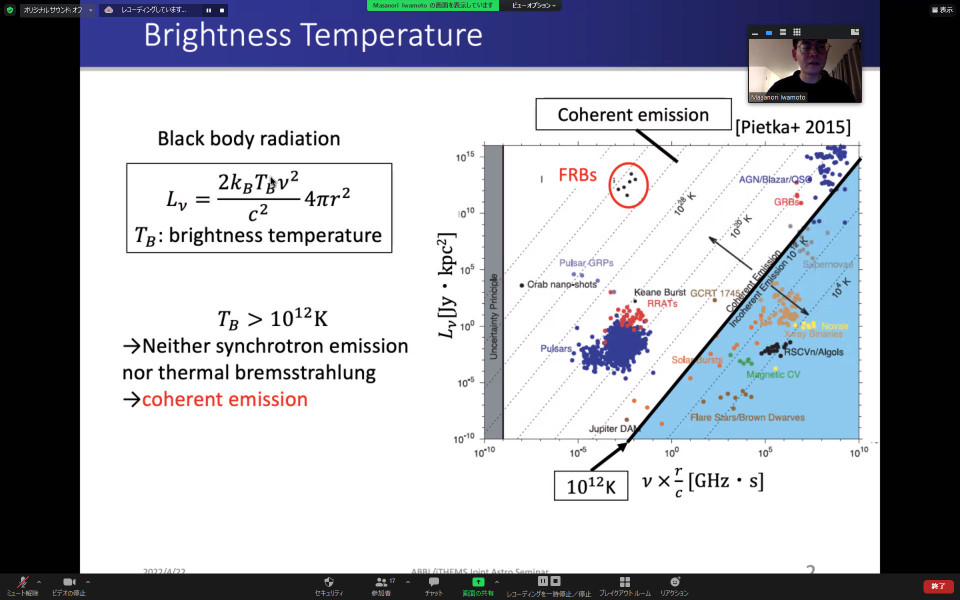ABBL-iTHEMS Joint Astro Seminar by Dr. Masanori Iwamoto on April 22, 2022
Dr. Masahiro Iwamoto gave a presentation on his recent three-dimensional (3D) particle-in-cell (PIC) simulation of relativistic shocks and application of the results of the 3D-PIC simulations to astrophysical phenomena. For example, the origin of fast radio bursts (FRBs; Lorimer et al. 2007) is one of the unsolved problems in astrophysics. Many observations of FRBs indicate that FRBs must be coherent emission in the sense that coherently moving electrons radiate electromagnetic waves. In relativistic shocks, it is well known that coherent electromagnetic waves are excited by synchrotron maser instability (SMI) in the shock transition (Hoshino & Arons 1991). The SMI is also known as the emission mechanism of coherent radio sources such as auroral kilometric radiation at Earth and Jovian decametric radiation. Recently, some models of fast radio burst based on the coherent emission from relativistic shock via the SMI have been proposed (e.g., Lyubarsky 2014; Beloborodov 2017; Plotnikov & Sironi 2019; Metzger et al. 2019) and the SMI in the context of relativistic shocks attracts more attention from astrophysics. In this seminar, by performing the world’s first 3D-PIC simulation of relativistic shocks, he demonstrated that large-amplitude electromagnetic waves are indeed excited by the SMI even in 3D and that the wave amplitude is significantly amplified and comparable to that in pair plasmas due to a positive feedback process associated with ion-electron coupling. Based on the simulation results, he discussed the applicability of the SMI for FRBs.
Reported by Shigehiro Nagataki

